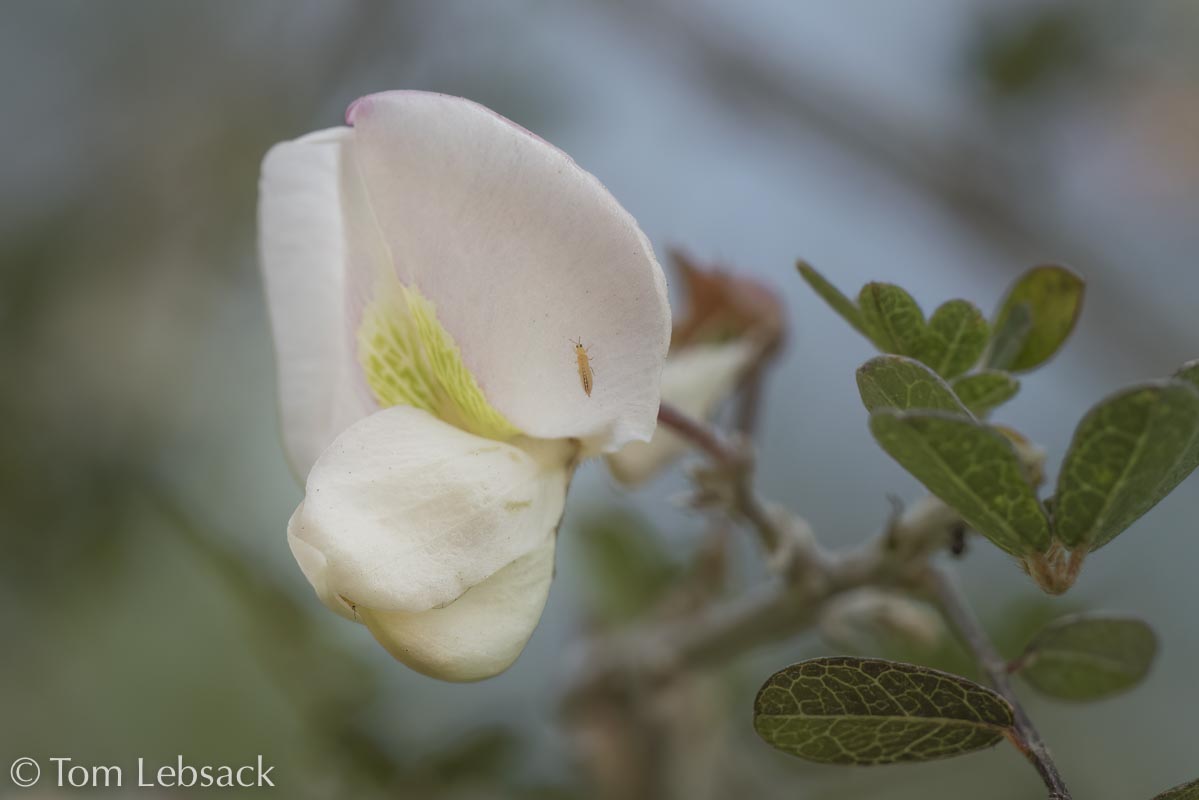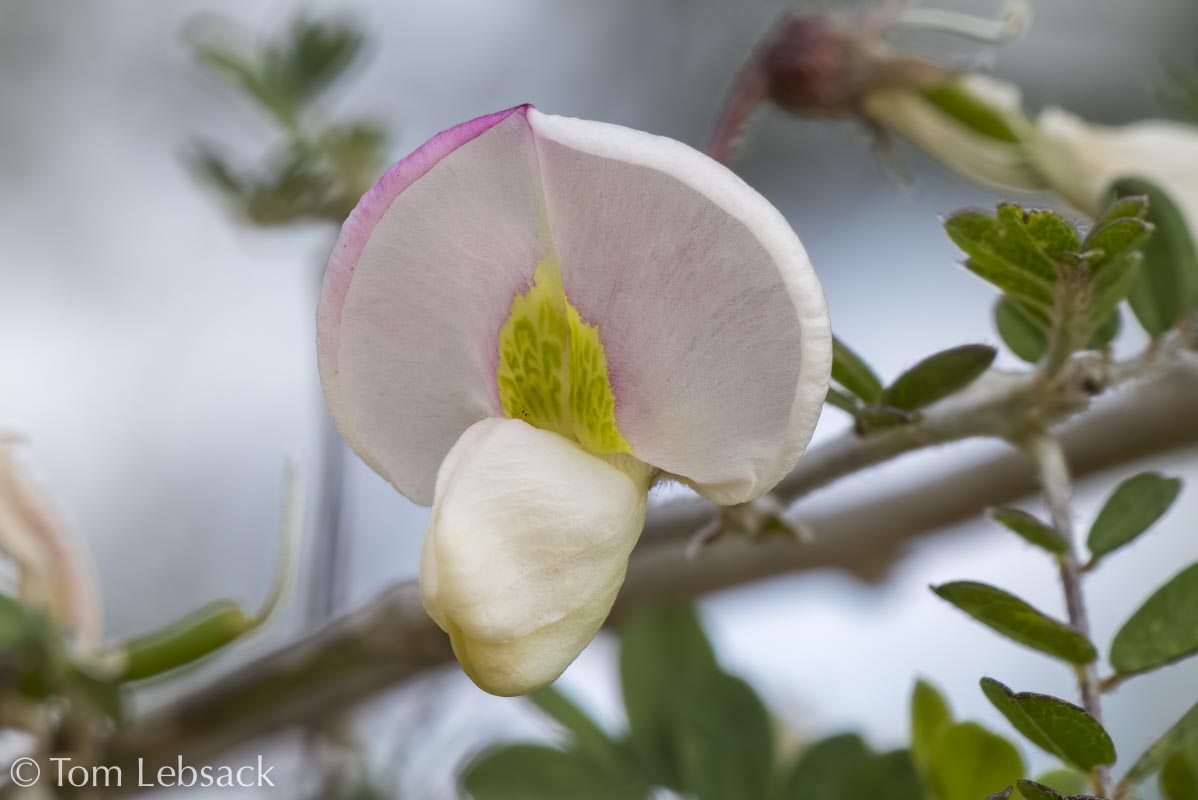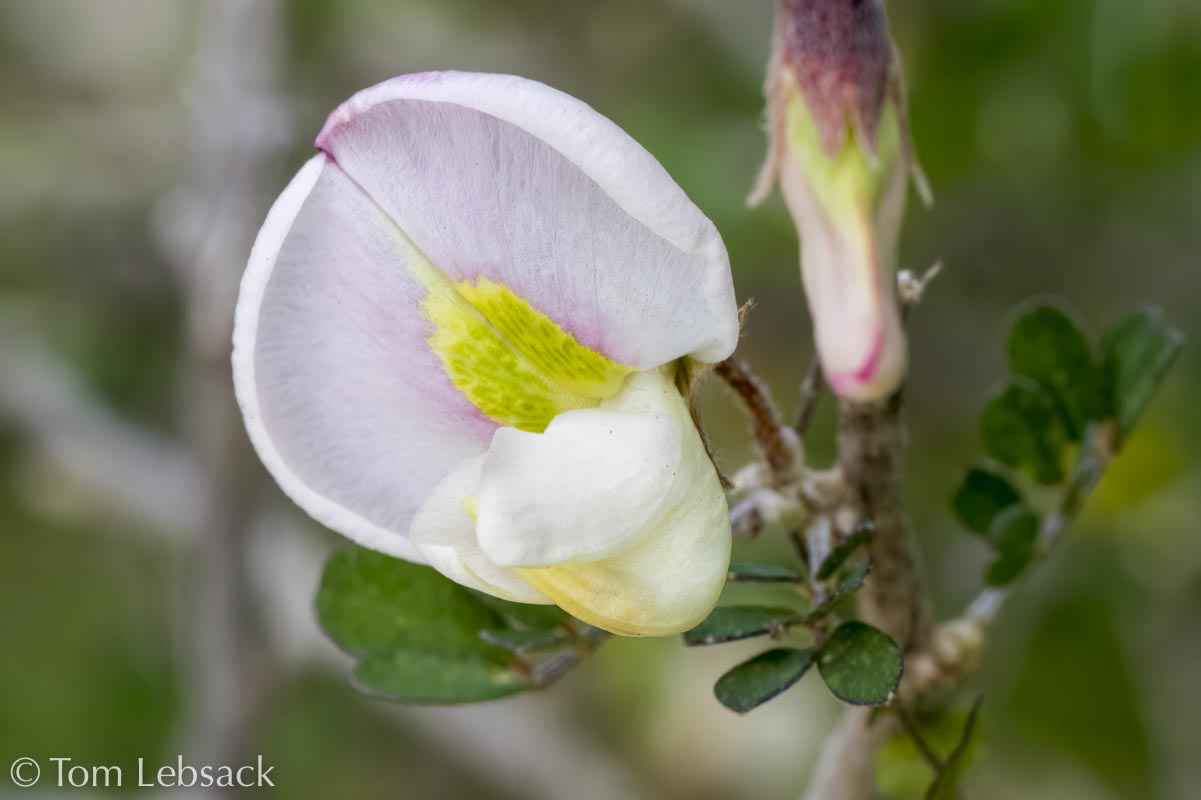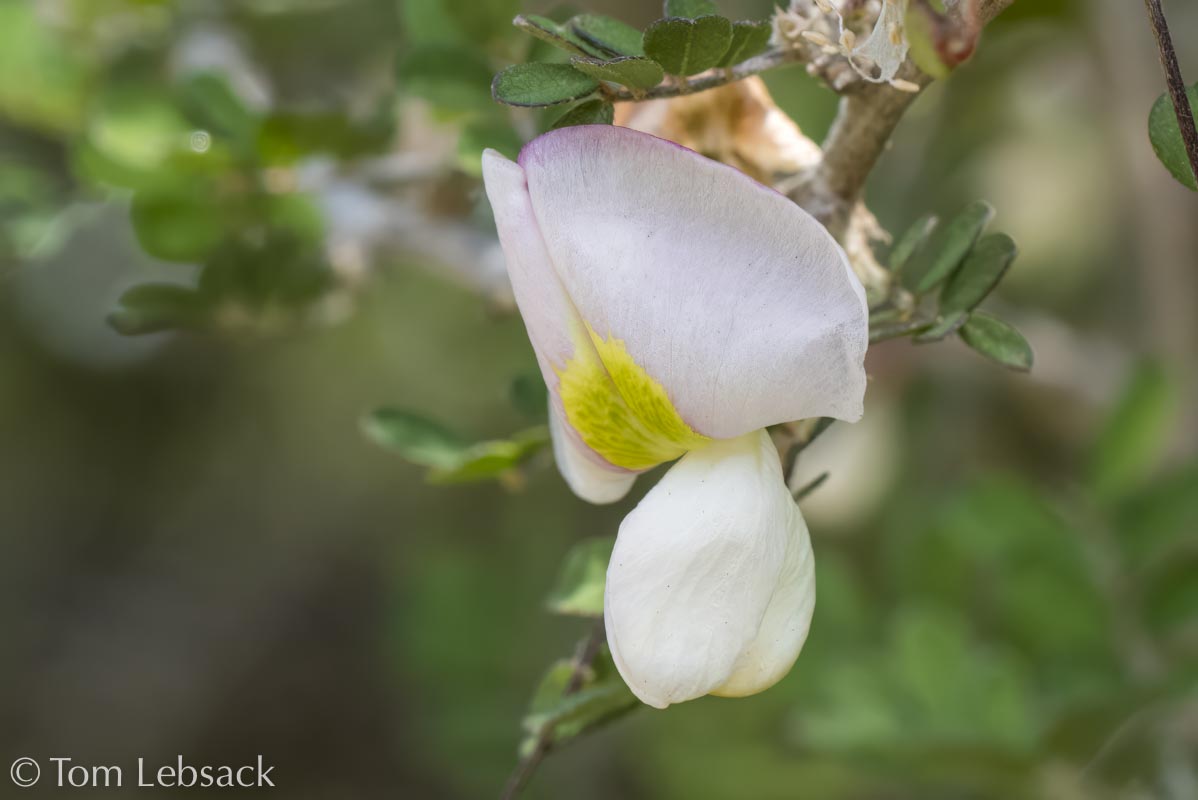Texas Wildbuds
Coursetia axillaris
(Texas Babybonnets)
| Scientific Name | Coursetia axillaris | USDA PLANTS Symbol | COAX |
| Common Name | Texas Babybonnets | ITIS Taxonomic Serial No. | 26555 |
| Family | Fabaceae (Pea) | Encyclopedia of Life Ref. | Click Here |
| Description | Habitat: Open areas, caliche ridges and woodlands; in well-drained soil. Infrequent or rare in far South Texas and northeast Mexico. Plant: Densely-branched shrub with rounded or irregular shape, 2 to 6+ feet tall; branches widely divergent, no spines. Leaves: Deciduous, alternate leaves, pinnately compound 3/8 to 1-1/4 inched long overall, with 6 to 10 small leaflets less than 1/3-inch long. Inflorescence: Small white, yellow or pale pink pea-like flowers less than 1/2-inch long, single or in clusters up to 4 blossoms in leaf axils and at branch ends. Bloom Period: February and March. References: "Manual of the Vascular Plants of Texas" by Correll and Johnston, Texas A&M and Encylopedia of Life. Note: Images below are from a cultivated plant at the Wildflower Center in Austin. |
BONAP Distribution Map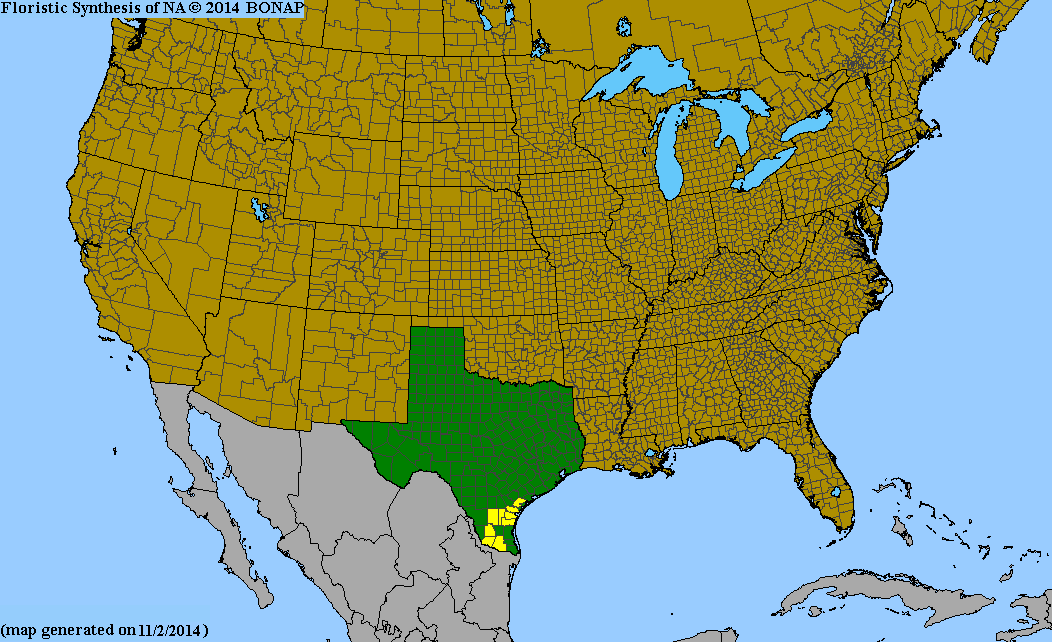 Map Color Key |
Texas Status: Native |
Banner photo of Castilleja indivisa and Lupinus ssp. taken along FM 1323 north of Johnson City, Blanco County
© Tom Lebsack 2025
Every attempt is made to provide accurate, up-to-date, and relevant information, but the completeness or accuracy of any information presented on this website cannot be guaranteed. I use authoritative references to insure high standards of accuracy and review and update the information frequently.
